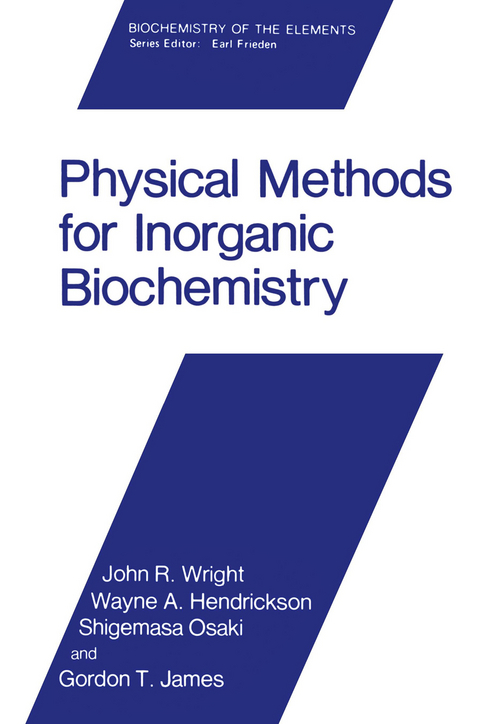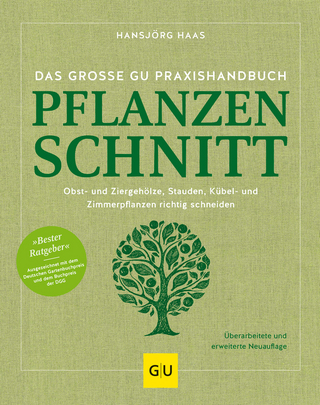
Physical Methods for Inorganic Biochemistry
Springer-Verlag New York Inc.
978-1-4684-4999-0 (ISBN)
This volume is intended for students and professionals in diverse areas of the biological and biochemical sciences. It is oriented to those who are unfamiliar with the use of physical methods in studies of the biological elements. We hope the reader will find the material a helpful reference for other volumes of this series as well as the general literature, and some may see ways to adopt these techniques in their own pursuits. Every effort has been made to avoid an abstruse presentation. It should be clear that one individual cannot be expert in all the disciplines considered here (and the authors recognize that fact with sin cere humility). As may be expected of an introductory reference, most of our attention was focused on the commonly used methods. To balance this, we have included a few examples of approaches which are promising but relatively undeveloped at this time. Also, an emphasis has been placed on element selectivity. It is impossible to envision the course of future events, and a volume which deals with instrumentation is especially prone to become outdated. Nevertheless, any valid approach to a scientific question should be applicable indefinitely.
1. Introduction.- 1.1 Physical Methods.- 1.2 Probable Future Trends in Physical Instrumentation.- References.- 2. Nuclear Magnetic Resonance (Nmr).- 2.1 The Phenomenon.- 2.2 Multinuclear Nmr.- 2.3 Nmr Phenomena Related to Molecular Structure.- 2.4 Instrument Characteristics.- 2.5 Sample Manipulation (Two-Way Communication).- 2.6 Biological Considerations.- References.- Appendix A: Correlation Nmr.- Appendix B: Mathematical Symbols Used in Chapter 2.- 3. Nuclear Quadrupole Resonance (Nqr).- 3.1 Properties of Nqr.- 3.2 Relationship to Mössbauer, Esr, and Nmr Spectroscopy.- 3.3 Instrumentation.- 3.4 Applications.- References.- 4. Mössbauer Spectroscopy.- 4.1 Instrumentation.- 4.2 Conversion Electron Detection.- 4.3 Sample Considerations.- 4.4 Mössbauer Effect and the Chemical Environment.- 4.5 Biological Applications of 57Fe.- 4.6 Mössbauer Isotopes Other than 57Fe.- 4.7 Mössbauer Emission Spectra.- 4.8 Bragg Scattering Effects.- References.- 5. Electron Spin Resonance (Esr).- 5.1 Introduction.- 5.2 Theory.- 5.3 Esr Instrumentation.- 5.4 Applications.- References.- 6. X-ray Diffraction Methods for the Analysis of Metalloproteins.- 6.1 Introduction.- 6.2 Theoretical Basis.- 6.3 Experimental Procedures.- 6.4 Structural Analysis.- 6.5 Applications.- References.- 7. Electron Energy Levels: Electron Spectroscopy and Related Methods.- 7.1 Electron Spectroscopy for Chemical Analysis (ESCA) and Ultraviolet Photoelectron Spectroscopy (UPS).- 7.2 Auger (Secondary Electron) Spectroscopy.- References.- 8. Laser Applications: Resonance Raman (RR) Spectroscopy and Related Methods.- 8.1 Perspective.- 8.2 Resonance Raman (RR) Spectroscopy.- 8.3 Sample Considerations.- 8.4 Symmetry and the Intensity of Vibrational Absorptions.- 8.5 Vibrational Energy Levels.- 8.6 Applications.- 8.7Newer Methods Which Minimize Fluorescence Interference.- References.- 9. Circular Dichroism (CD) and Magnetic Circular Dichroism (MCD).- 9.1 The Relationship between ORD, CD, MORD, and MCD.- 9.2 Sample Considerations.- 9.3 Effects Observed in MCD Spectra.- 9.4 Biochemical Applications.- References.- 10. Kinetic Methods.- 10.1 Introduction.- 10.2 Methods.- 10.3 Applications.- References.- 11. Bioinorganic Topochemistry: Microprobe Methods of Analysis.- 11.1 Electron Probe Microanalysis.- 11.2 Ion, Laser, and Proton Microprobe Analysis of Elements.- References.- 12. Neutron Activation Analysis.- 12.1 Introduction.- 12.2 Applications and Examples of Neutron Activation.- References.
| Reihe/Serie | Biochemistry of the Elements ; 5 |
|---|---|
| Zusatzinfo | 400 p. |
| Verlagsort | New York, NY |
| Sprache | englisch |
| Maße | 152 x 229 mm |
| Themenwelt | Sachbuch/Ratgeber ► Natur / Technik ► Garten |
| Medizin / Pharmazie ► Medizinische Fachgebiete ► Pharmakologie / Pharmakotherapie | |
| Medizin / Pharmazie ► Pharmazie | |
| Naturwissenschaften ► Biologie ► Biochemie | |
| Naturwissenschaften ► Chemie ► Physikalische Chemie | |
| ISBN-10 | 1-4684-4999-0 / 1468449990 |
| ISBN-13 | 978-1-4684-4999-0 / 9781468449990 |
| Zustand | Neuware |
| Haben Sie eine Frage zum Produkt? |
aus dem Bereich


